This magnificent rhino mask has been loaned to WMODA by Balocoloc Artisans of Venice. Its arrival has inspired us to look at other rhino works of art in the museum. Not surprisingly the Ardmore artists have produced a crash of rhinos, to use the collective noun. KwaZulu-Natal, where the Ardmore studio is located, has the greatest density of rhino in the country, both white and black species. However, poaching has taken its toll with over 1,000 of these beasts being slaughtered for their horns in 2013 alone.
Rhino horn elixirs for fevers and liver problems were first prescribed in traditional Chinese medicine more than 1,800 years ago but the removal of rhino horn powder from the Chinese pharmacopeia in the 1990s helped douse demand along with trade bans among Asian countries. However, there has been a resurgence of demand in Vietnam following persistent, although erroneous rumors that rhino horn can cure cancer. Rhino poaching has increased to the extent that the rhinoceros is considered critically endangered in South Africa.
Ardmore rhino riders have often been used to raise awareness and funds for this endangered species. Riding a rhino seems an impossible feat but there is an exception. Rupert, a baby black rhino, was saved during Operation Noah and hand-reared by the head vet’s family. He drank 32 pints of milk a day through a straw. The vet’s children enjoyed riding Rupert around the garden before he was transferred to a game reserve.
Ardmore rhino horns are a feature of the Cole & Son wallpaper design, named Jabu in honor of the artist Jabu Nene who paints striking patterns on rhinos modeled by Alex Sibanda. The pattern book for all the striking wallpaper patterns can be enjoyed in the Ardmore exhibit at WMODA, courtesy of Lee Joffa, the US distributors.
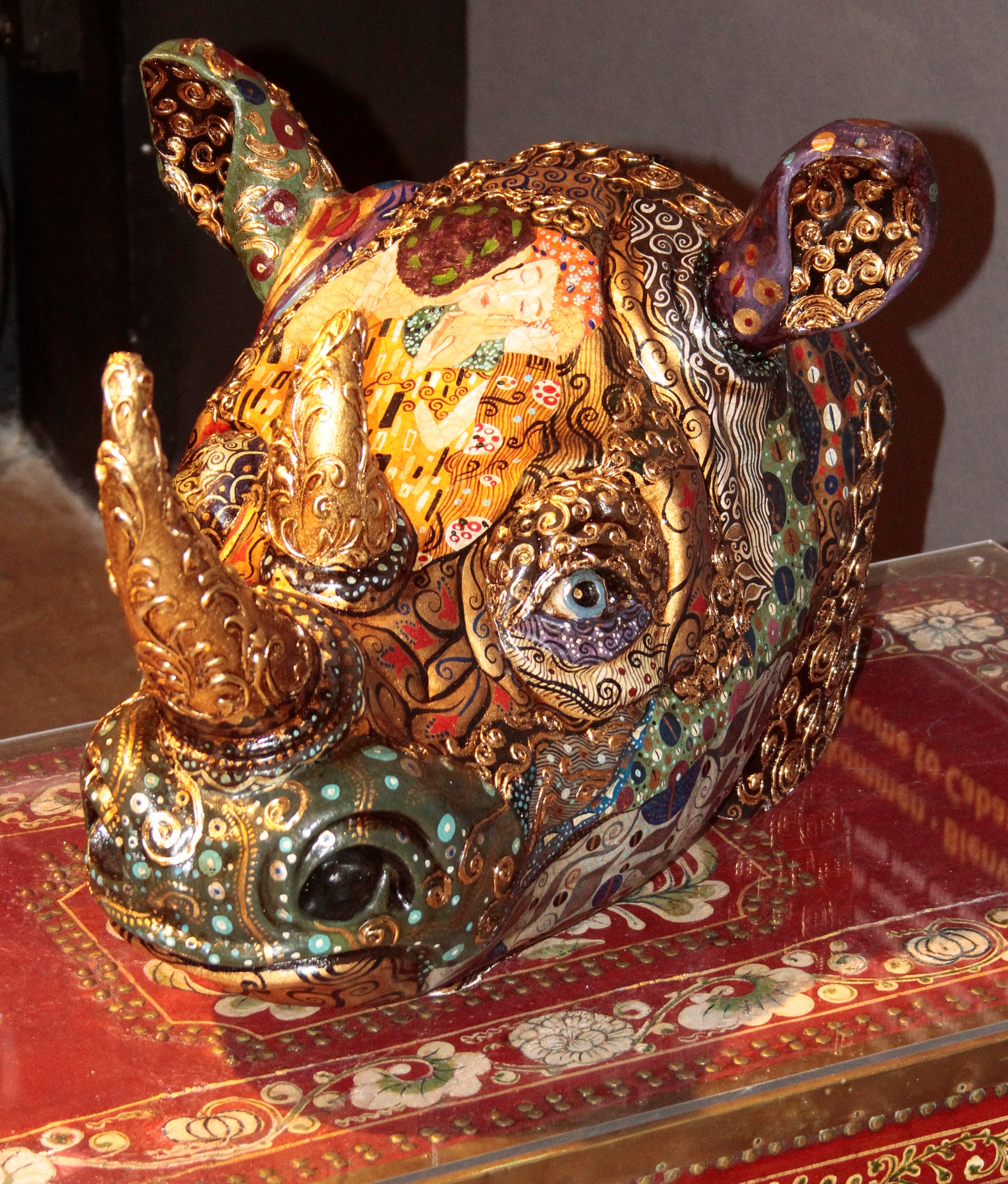
Rhinoceros Venetian Mask
by Balocoloc Artisans
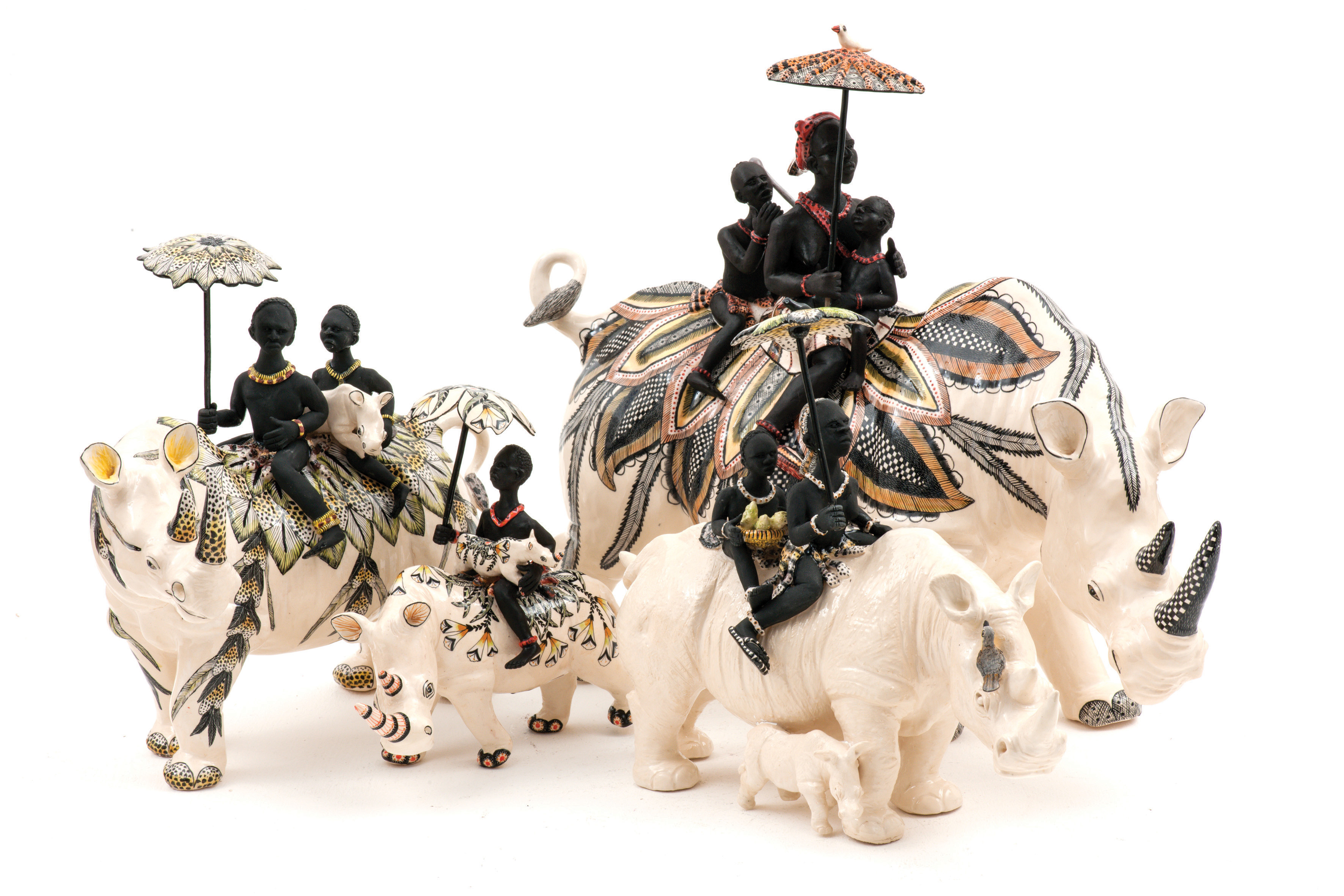
Rhino Riders
by Ardmore Ceramic Art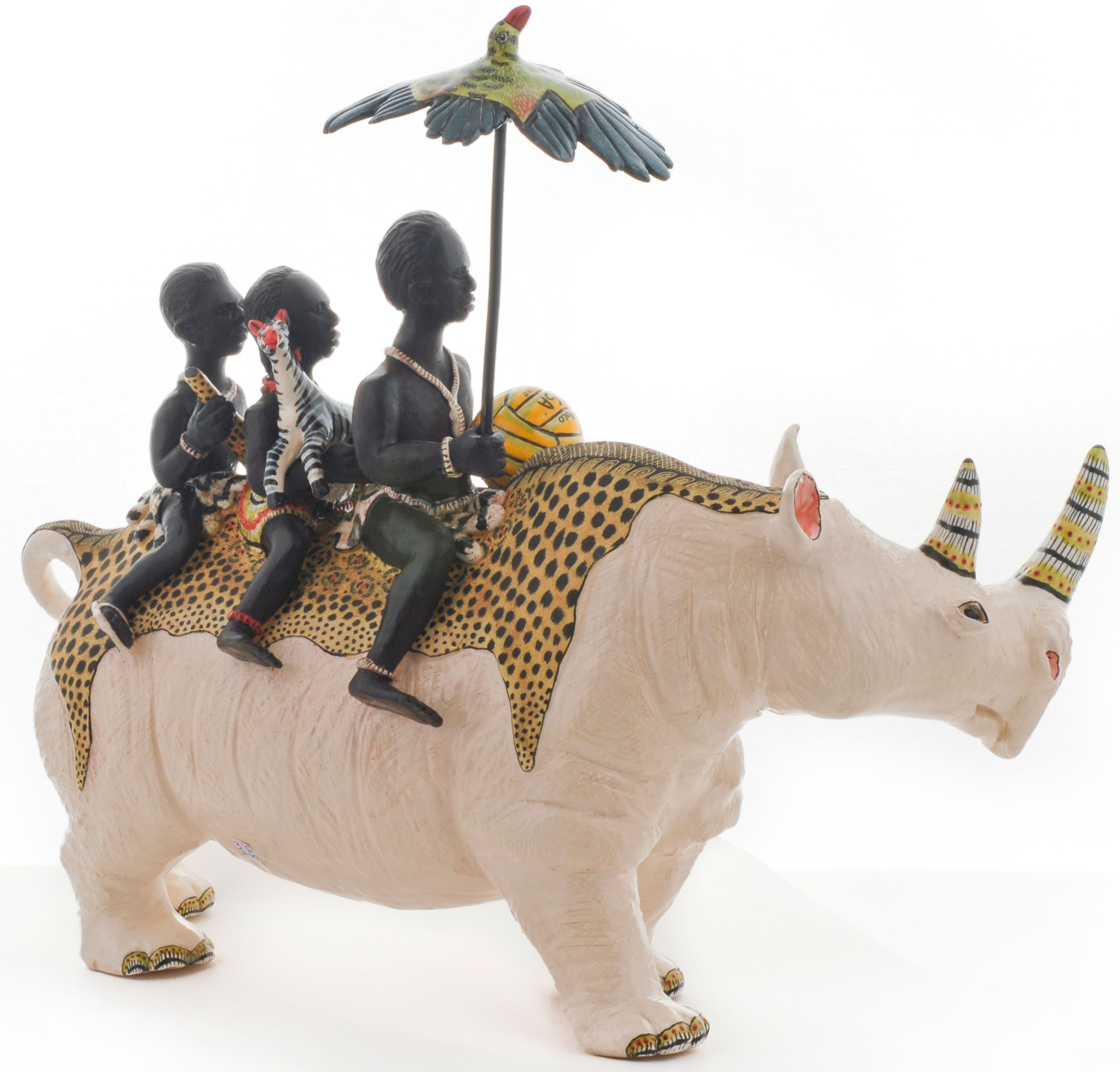
Rhinoceros Sculpture
by Ardmore Ceramic Art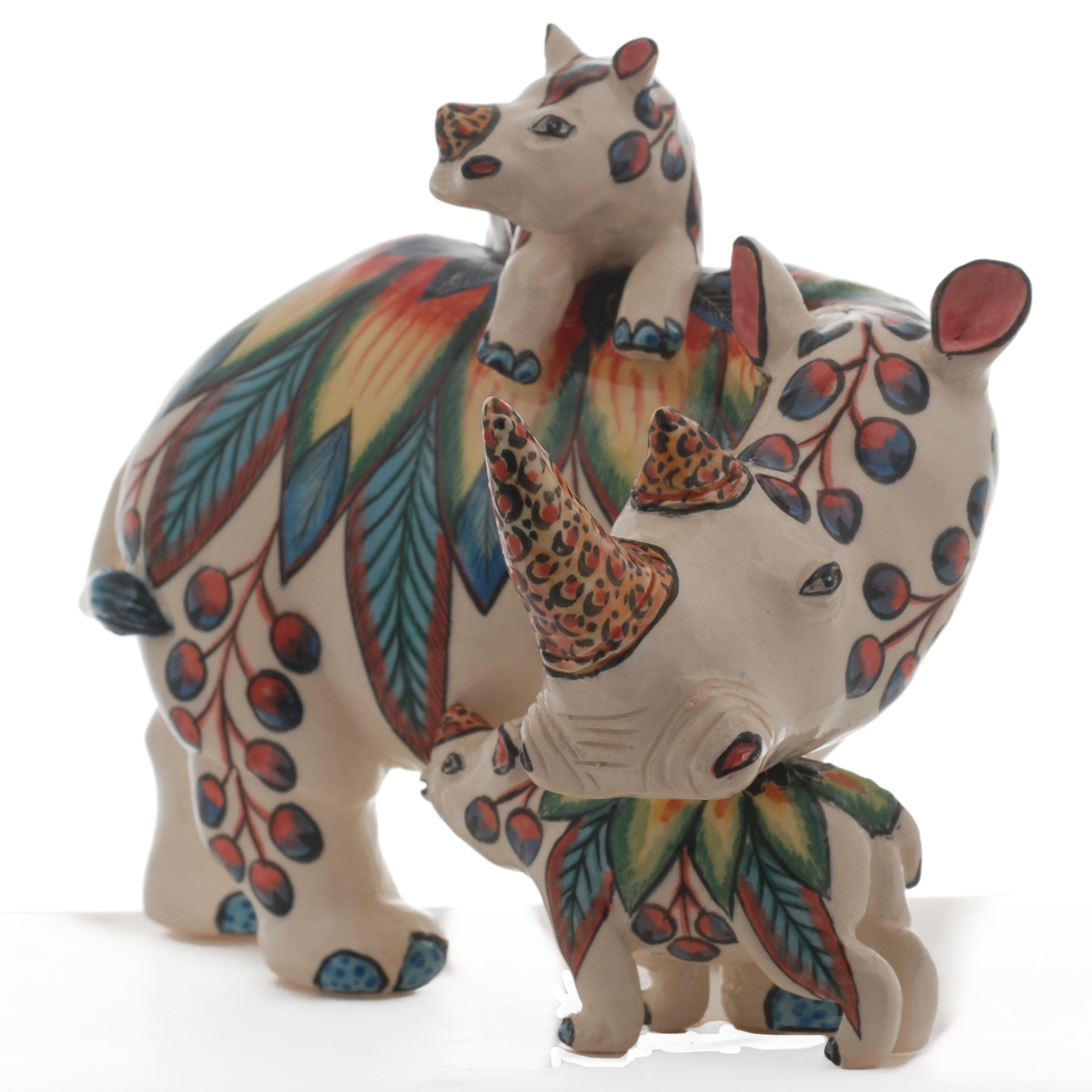
Rhino Sculpture
by Ardmore Ceramic Art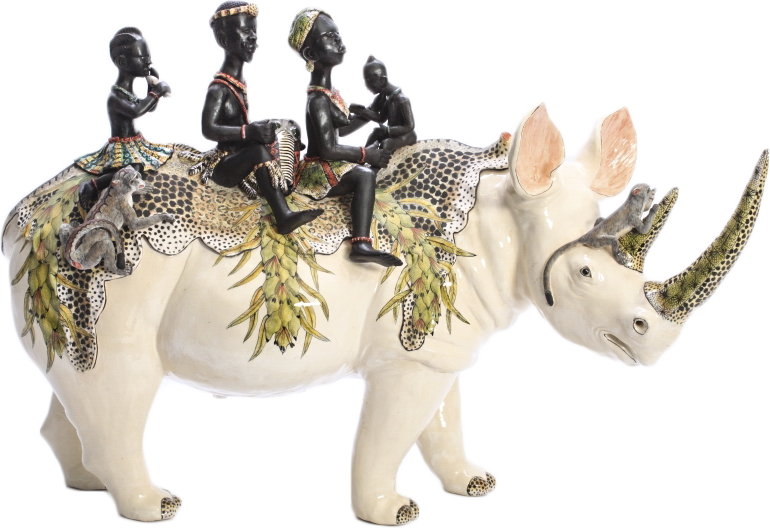
Rhino Sculpture
by Ardmore Ceramic Art
Saving a rhino during Operation Noah
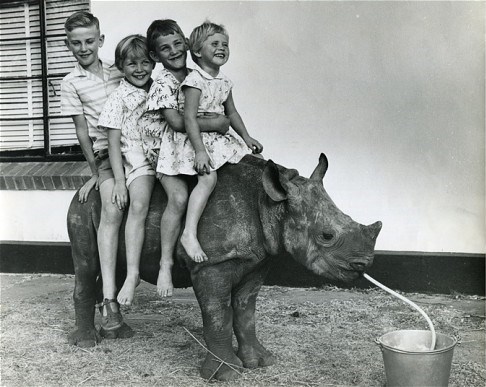
Rupert Rhino
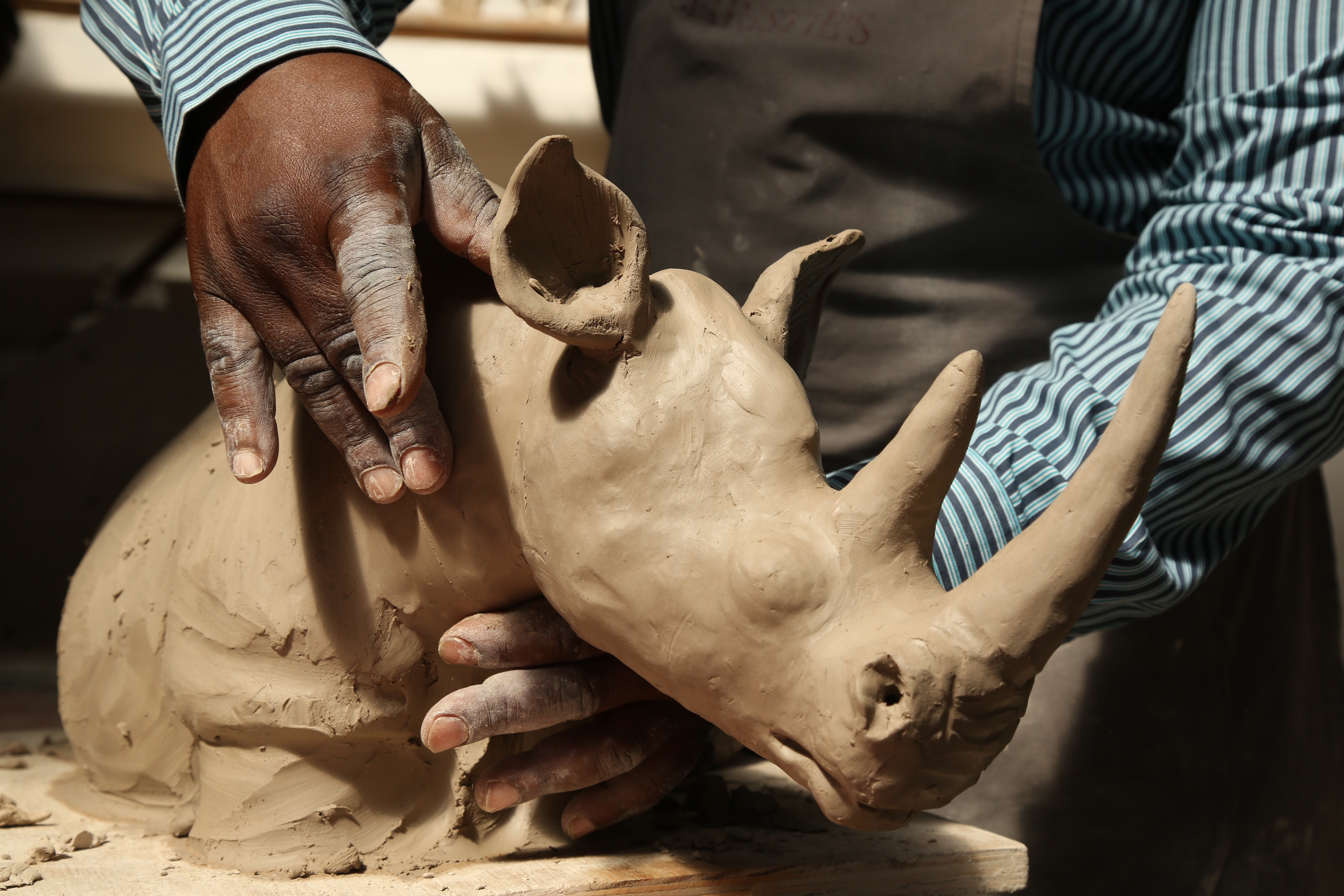
Alex Sibanda
Sculpting at Ardmore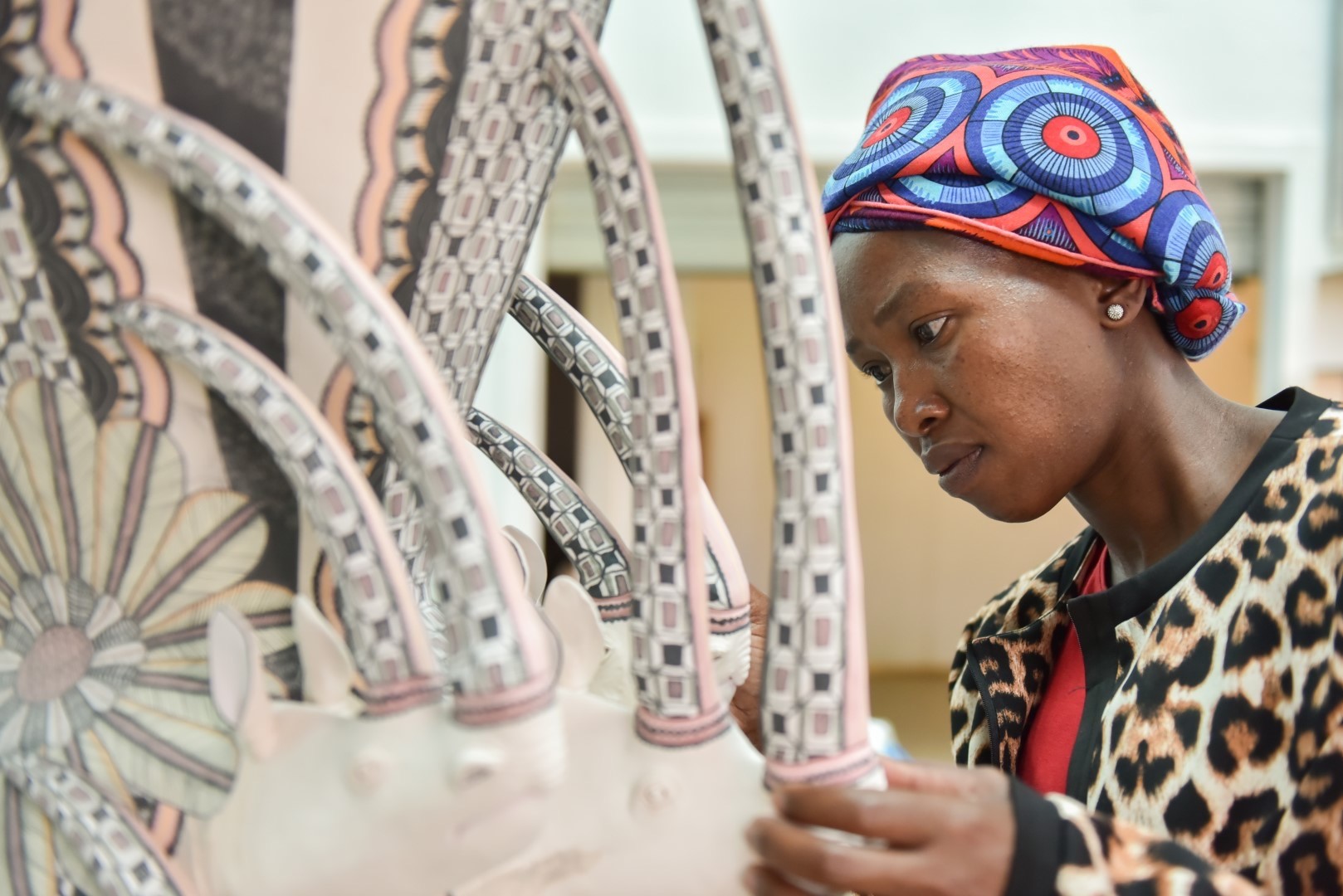
Jabu Nene
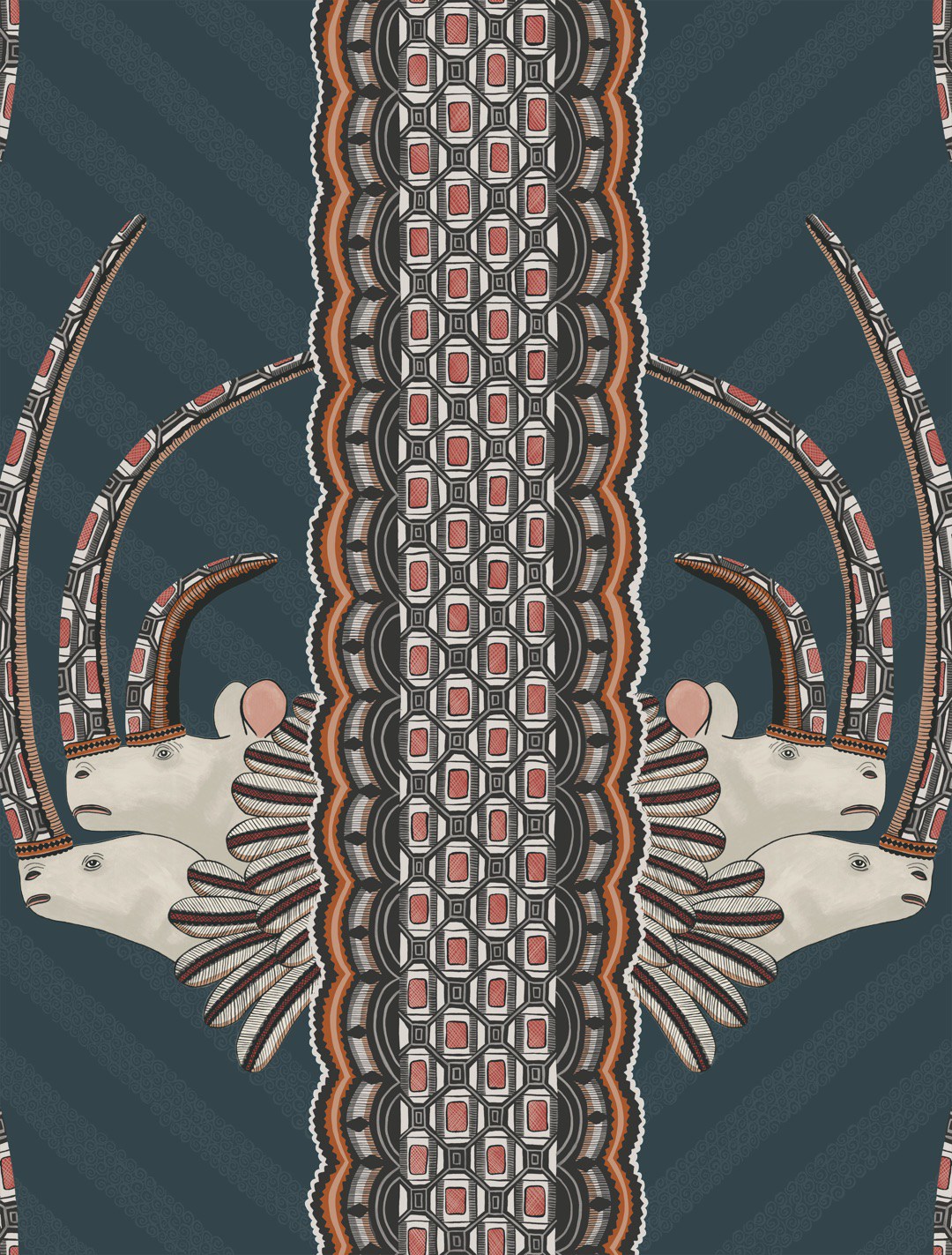
Jabu Wallpaper
by Cole & Sons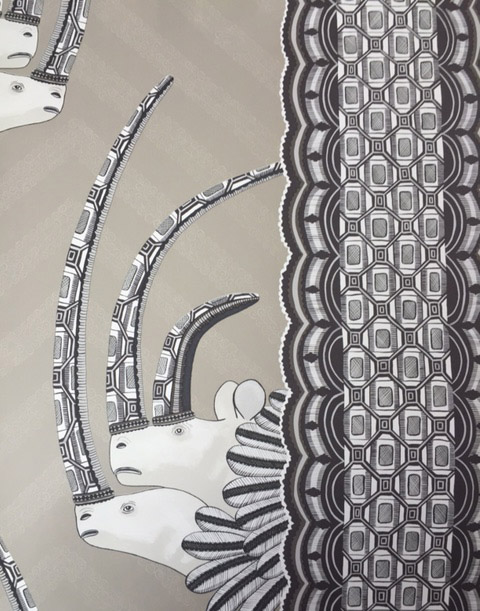
Jabu Wall paper
by Cole & Sons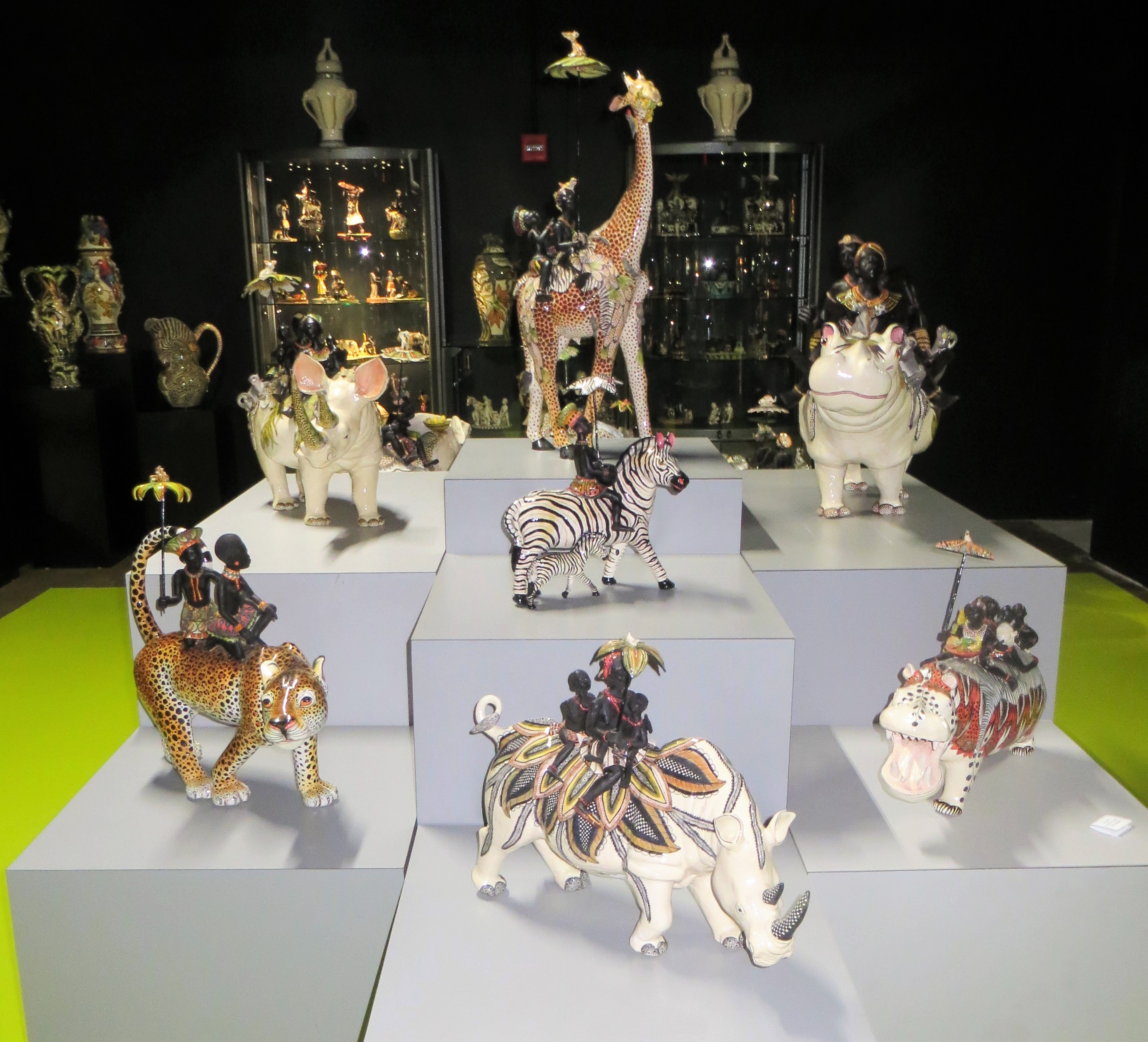
Ardmore Ceramic Art
at the WMODA Museum
